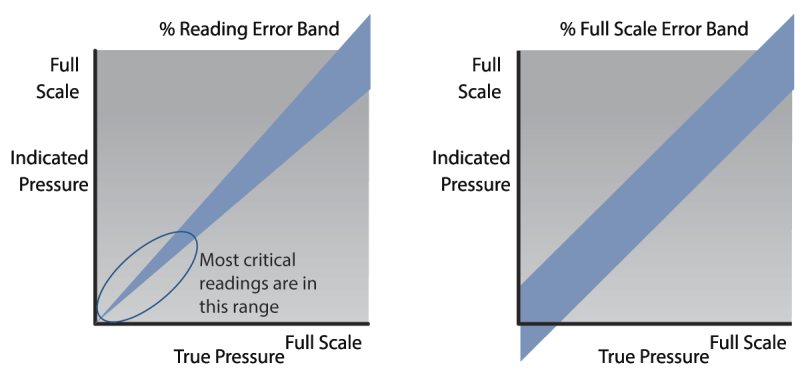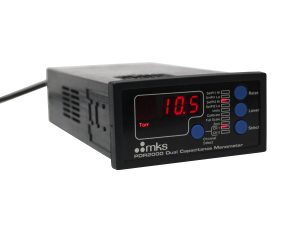AA02A Baratron® 0.1 to 1000 Torr Heated Absolute Capacitance Manometers
Overview
The AA02A Baratron® manometer is an advanced general purpose absolute heated capacitance manometer developed specifically for use in vacuum and pressure measurement applications where high accuracy and excellent repeatability are crucial to process success. These capacitance manometers are internally heated to 45°, 80°, or 100°C. They use state-of-the-art digital architecture throughout to produce the highest possible long-term performance and reliability.
- Full scale pressure measurement from 0.1 to 1000 Torr
- Sensor heated to 45°, 80°, or 100°C for up to 0.10% of reading accuracy
- Fully welded sensor built entirely from Inconel® and Incoloy® nickel alloys
- 0 to 10 VDC analog output proportional to absolute pressure
- Pushbutton zero adjustment of zero position up to 20% of full scale
- All-digital architecture and improved thermal management for long-term stability, improved accuracy, and increased reliability
Products
| Compare | Description | Drawings, CAD & Specs | Availability | Price | |||
|---|---|---|---|---|---|---|---|

|
AA02A.1TGAS48B000H00 | $2,432 |
|
||||

|
AA02A13TCES44B000000 | $2,310 |
|
Configuration Options
The following options are available for the AA02A Baratron® Heated Absolute Capacitance Manometer.
Ordering Code Example: AA02A.1TCES44B000V00
| Configuration Option | Option Code |
|---|---|
| AA02A Heated Absolute Capacitance Manometer | AA02A |
Range Full Scale |
|
| 0.1 | .1 |
| 0.25 | RE |
| 1 | 01 |
| 2 | 02 |
| 10 | 11 |
| 20 | 21 |
| 100 | 12 |
| 200 | 22 |
| 500 | 52 |
| 1000 | 13 |
Engineering Units |
|
| Torr/mmHg | T |
| mbar | M |
| kPa | K |
Fittings (compatible with) |
|
| 0.5 in. (12.7 mm) OD tube | BA |
| 4 VCR female (V sensor only) | CD |
| 8 VCR female | CE |
| 8 VCR male | CF |
| NW16 ISO-KF | GA |
| NW25 ISO-KF | GC |
| 1.33'' (33.8 mm) Conflat, rotatable | HA |
| 2.75'' OD Conflat, rotatable | HC |
| 8 VCO female | DA |
Sensor |
|
| Standard Sensor, standard inlet tube length | S |
| Standard Sensor, reduced inlet tube length | T |
Input Voltage |
|
| +24 VDC | 3 |
| ±15 VDC | 4 |
| +24 VDC (required with trip point option) | 5 |
| ±15 VDC (required with trip point option) | 6 |
Sensor Temperature |
|
| 100°C | 1 |
| 80°C | 8 |
| 45°C | 4 |
Electrical Connector |
|
| 15 POS D-subminiature-M with screw locks | B |
| 15 POS D-subminiature-M with slide lock posts | P |
Trip Points |
|
| None | 00 |
| Trip A above 50%, Trip B above 50% of Full Scale Range | AA |
| Trip A above 50%, Trip B below 50% of Full Scale Range | AB |
| Trip A below 50%, Trip B below 50% of Full Scale Range | BB |
| Trip A below 50%, Trip B above 50% of Full Scale Range | BA |
Reserved |
|
| Reserved | 0 |
Calibration Orientation |
|
| Standard (all ranges ≥ 1 Torr) | 0 |
| Vertical (ranges < 1 Torr only) | H |
| Horizontal (ranges < 1 Torr only) | V |
Accuracy |
|
| Standard | 0 |
Reserved |
|
| Reserved | 0 |
Specifications
-
TypeBaratron® Pressure Transducer
-
Sensor TypeStandard or Reduced Tube Length
-
Measurement TypeAbsolute
-
Full Scale Pressure Ranges0.1, 0.25, 0.5, 1, 2, 10, 20, 100, 200, 500, & 1000 Torr (and metric equivalents)
-
Sensor Temperature45°, 80°, or 100°C
-
Fitting Type½ inch O.D. tube standard, other types optional
-
Analog Output0 to 10 VDC into > 10 kΩ load
-
Electrical Connector15-pin D-subminiature
-
Accuracy45°C Models: 0.10% Reading for 1-1000 Torr, 0.12% Reading for < 1 Torr
80° and 100°C Models: 0.20% Reading for 1-1000 Torr, 0.40% Reading for < 1 Torr -
Warm-up Time2 hours for 1-1000 Torr models
3 hours for < 1 Torr models
-
Time Constant<20 ms for ≥1 Torr
<40 ms for <1 Torr -
Zero Temperature Coefficient45°C Models: 0.002% Full Scale/°C for 1-1000 Torr, 0.005% Full Scale/°C for < 1 Torr
80° and 100°C Models: 0.002% Full Scale/°C for 1-1000 Torr, 0.01% Full Scale/°C for < 1 Torr -
Span Temperature Coefficient0.02% Reading/°C
-
Operating Temperature Range45°C Models: 15° to 40°C
80° and 100°C Models: 15° to 50°C -
Overpressure Limit45 psia
-
Volume6.3 cc (nominal – varies depending on fitting)
-
Materials Exposed to Process GasesInconel and Incoloy nickel alloys
-
Power Requirements45°C Models: ±15 VDC (±5%) @ 0.40 amps or +24 VDC ±10% @ 11 W
80° and 100°C Models: ±15 VDC (±5%) @ 0.60 amps or +24 VDC ±10% @ 22 W -
Output RelaysSPST contacts rated at 0.75 Amp @ 60 VDC or 60 VAC @ 20 (°C) room ambient temperature
-
ComplianceCE
Features
Baratron® Capacitance Manometer Technology
Capacitance manometers are electro-mechanical gauges that can measure both pressure and vacuum. The capacitance gauge translates a pressure-modulated movement in a thin diaphragm into an electrical signal proportional to the pressure. The pressure sensor is the thin diaphragm that is exposed to the pressure or vacuum being measured via the inlet tube. An electrode is mounted in the reference cavity behind the diaphragm. Pressure differences between the process and the reference cavity deflect the diaphragm slightly, changing the distance between it and the electrode. Variations in this distance produce variations in the capacitance between the diaphragm and the electrode creating an electrical signal that is proportional to the pressure change. Since differences in the capacitance signal are produced by physical changes within the manometer and not by changes in the gas properties, pressure measurements by the capacitance manometer are independent of the composition of the gas being measured.
Absolute Pressure Measurement
These Baratron® pressure transducers are referenced to vacuum for absolute pressure measurement. Applications include: vacuum furnaces, freeze-drying of fruits and vegetables, gas lasers, automotive component testing, bottle coatings, and vacuum distillation.
Inconel® and Incoloy® Construction
These pressure transducers feature Inconel® and Incoloy® nickel alloy construction of the pressure sensor allowing it to operate without damage in virtually any chemical environment, including halogens, deionized water and steam, and ozone. The sensor is fully welded with no intermediate brazing or joining materials.
Internally Heated to 45°, 80°, or 100°C
These capacitance manometers are internally heated for improved accuracy. Unheated versions are exposed to ambient temperature variations which can degrade the sensor accuracy. These devices have the sensor enclosed in a volume that is maintained at a constant temperature above ambient. This solution improves the manometer’s accuracy and repeatability and lowers instrument drift by reducing or eliminating process contamination within the manometer. Heated manometers are recommended for applications that require maximum accuracy and repeatability, operate above ambient temperature and for those processes that employ hot gases.
Accessories
Resources
Literature
- AA02A Baratron® Heated Absolute Capacitance Manometer Datasheet (266.9 kB, PDF)
Manuals
- AA02A Baratron® Heated Capacitance Manometer Manual (1.1 MB, PDF)
- AA02A Baratron® Capacitance Manometer Pin-outs (98.8 kB, PDF)
Drawings & CADs
- AA02A Manometer 3D Model Files
- AA02 Baratron® Dimensional Drawings (449.6 kB, PDF)









 Ultra-High Velocity
Ultra-High Velocity